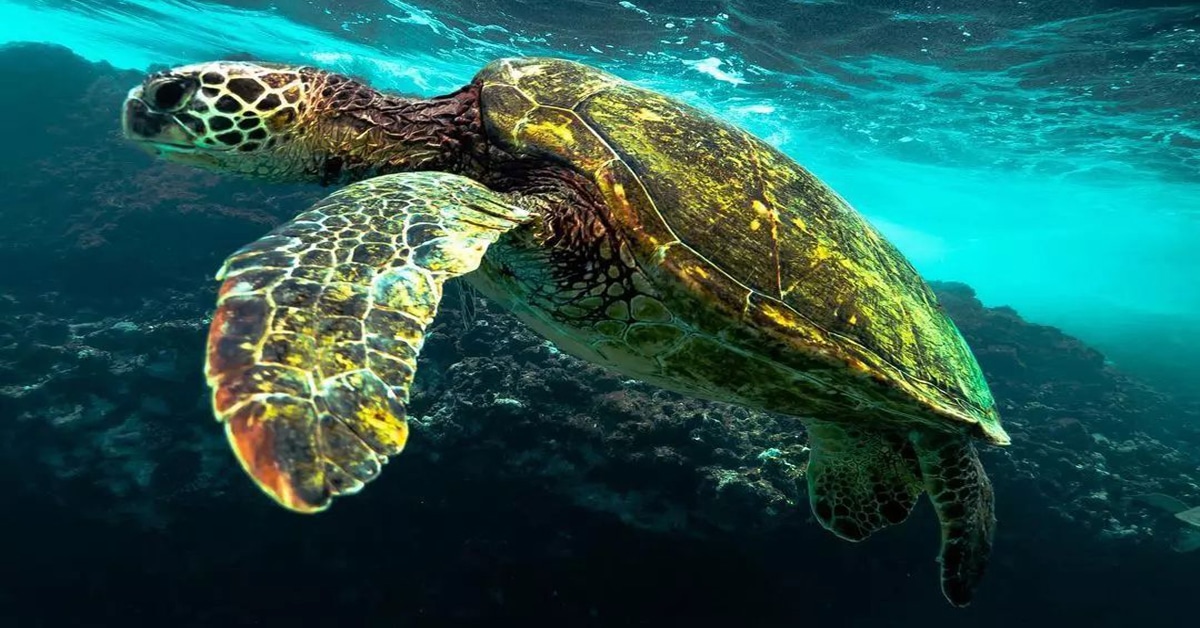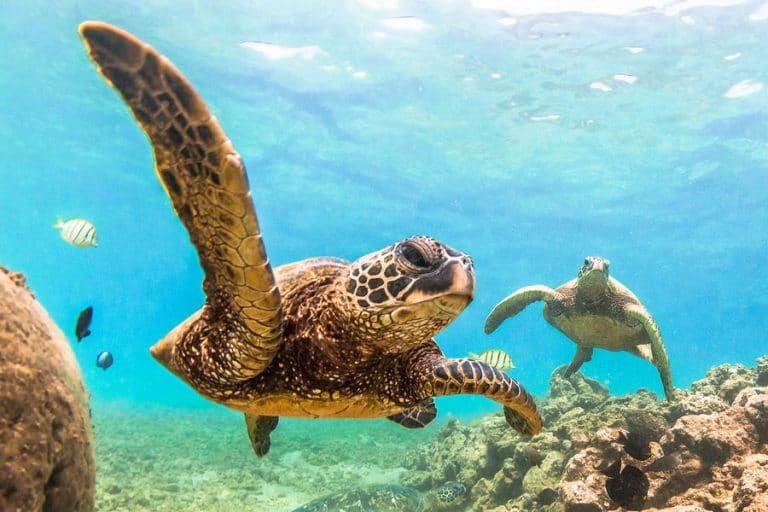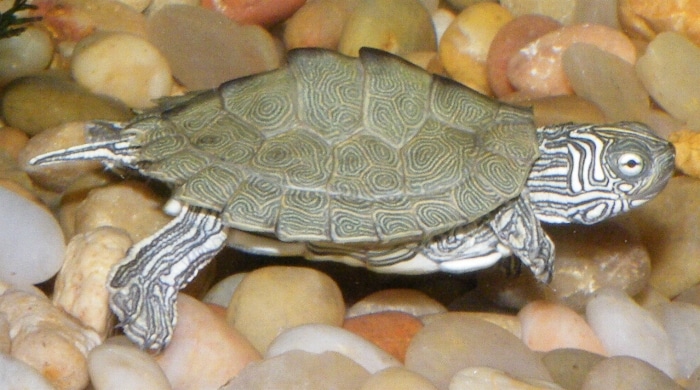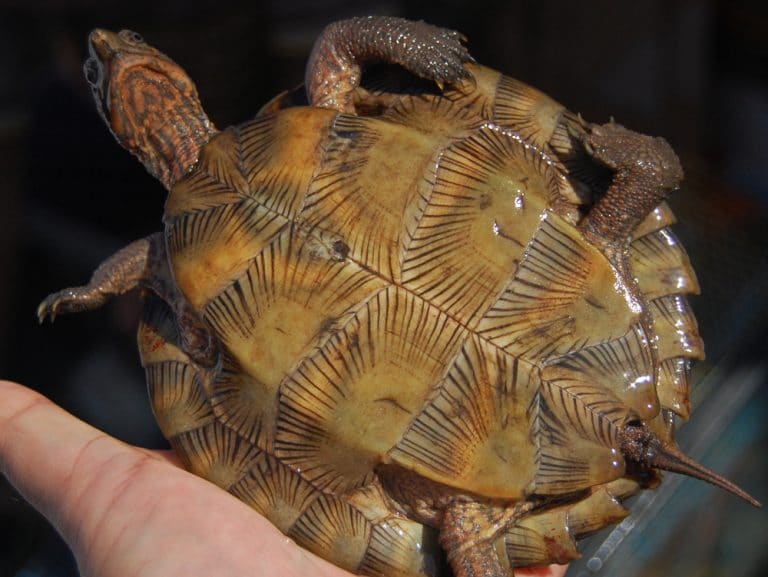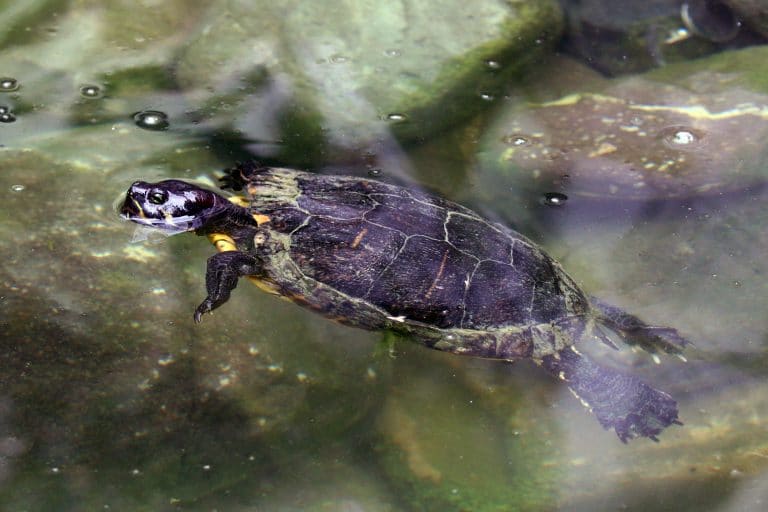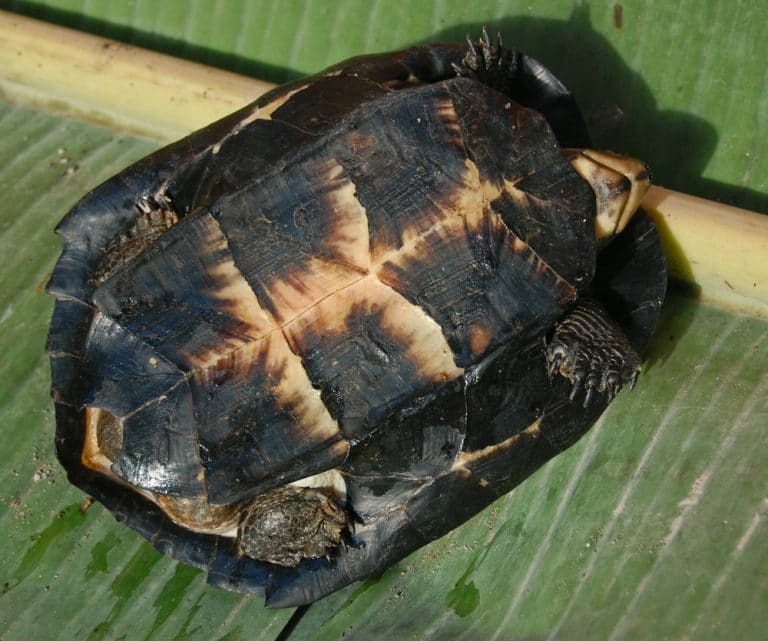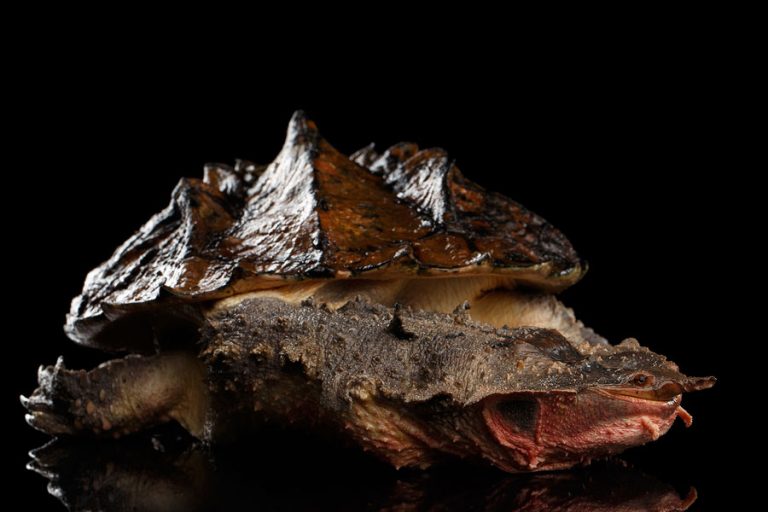The Biggest Turtle In The World – Fascinating Facts You Didn’t Know
Turtles are mesmerizing creatures, which is why they have been incorporated into legend, tradition, art, and popular culture. Due to their longevity and knowledge, they are sacred animals in many cultures. Depending on the genus, the shelled lizards can range greatly in size and form. Turtles are known as gentle giants all over the world, and when lifted out of the ocean and placed on solid ground, they hardly stand out from other land turtles.
You might not be aware that some species of turtles are significantly bigger than others. That’s why below we will explore the fascinating story of the biggest turtle in the world.
Weight & Size Of Turtles
Before learning more about the biggest turtle in the world, let’s first overview what affects those animals’ size and weight. A turtle’s weight and height can vary greatly from one to the next. Age, nutrition, gender, environment, and UV radiation are the main determinants of their growth.
Generally speaking, female turtles are larger than male turtles. Sometimes the height disparity is not that big of a deal. Female turtles are about an inch larger than male turtles, though this difference can vary.
Turtles grow larger as they mature, just like any other mammal. But sluggish development is to be anticipated. Most species of turtles reach their maximum size between the ages of 4 and 10. In their first 4 or 5 years, turtles develop more quickly. However, they then develop gradually.
The Biggest Turtle in The World – Leatherback Turtle
The Leatherback turtle is considered to be the biggest turtle in the world. The only remaining member of the Dermochelyidae family, the leatherback, weighs up to 900 kilograms, or 1982 pounds. However, this is only an average. Some have even been found to exceed these measurements in terms of weight and length. A 3-meter-long, more than 900-kilogram leatherback turtle was discovered on the Welsh shore.
The span of a specimen can be up to 8.9 feet (2.7 meters) from the point of one front flipper to the tip of the other, and the length of the shell can be up to 7 feet (2.13 meters).
Because of its round, oval form and similarity to the vintage instrument, the leatherback turtle is also referred to as the “lute turtle.” The term “leatherback” refers to the shell’s blue and black coloring, which mimics the surface of the material. The leatherback turtle lacks a hard carapace, unlike other turtle types. Instead, a dense coating of skin and fat covers it, emphasizing the creature’s leathery appearance. Each of these turtles has a different pattern of white spots that are distinctive to that particular turtle.
This species of turtle stays in frigid waters all year and has an average lifespan of 50 years. Being the biggest turtle in the world, the leatherback spends most of its formative years in coral-protected regions of the water.
The turtle can capture many of the numerous crustaceans that reside there while also avoiding larger predators like sharks and orcas. As adults, leatherback turtles migrate to deeper ocean regions where they can search for octopuses, squid, and tiny fish because of their thick skin, which allows them to endure extremely cold temperatures even at 1300 meters below sea level.
Scientists have witnessed leatherback turtles on beaches to the west of the Pacific Ocean from September to March as well as on the Atlantic from March to July during the laying season, though little is known about how they propagate and give birth. Scientists have observed that the leatherback turtle has completely vanished from previous nesting locations like Sicily, Turkey, and Israel over time.
5 of The Biggest Turtle In The World
1. Loggerhead Turtle
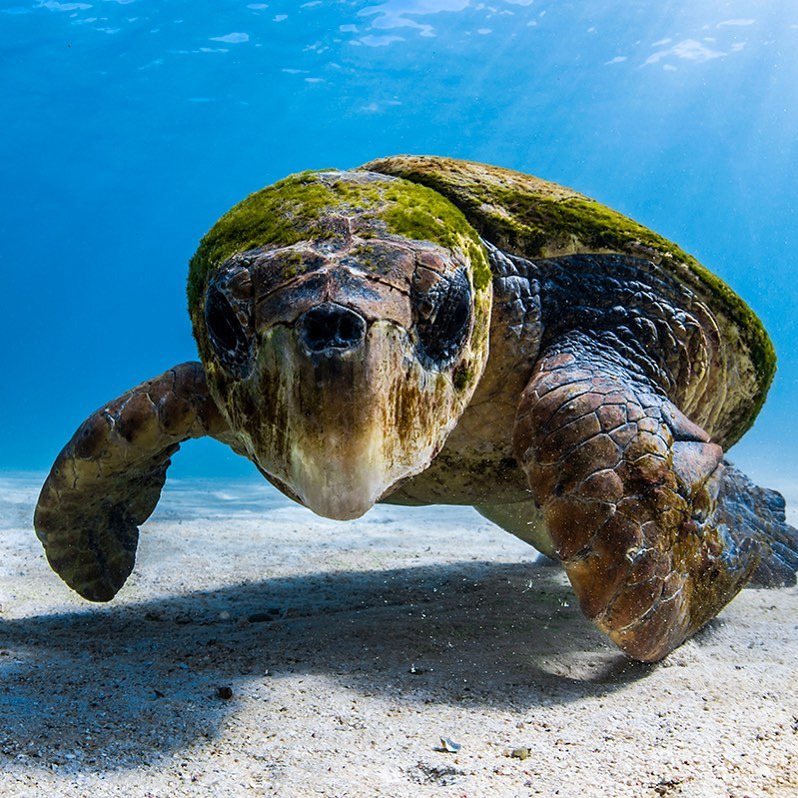
The nickname “loggerhead” comes from loggerhead turtles’ large skulls and powerful jaw muscles, which enable them to pulverize hard-shelled food items like clams and marine urchins. 39 inches is the average length of the carapace of those turtles. Loggerhead turtles can weigh up to 545 kg (1200 lbs). As you can see, these chelonians are enormous.
The loggerhead turtle, which is the second biggest turtle in the world after the leatherback, can be found nesting along the shores of the Mediterranean, spanning from Greece and Turkey to Israel and Libya. However, their nesting sites are increasingly threatened by the potential conversion into tourist attractions, posing a significant risk to their populations.
Both loggerhead marine turtles discovered in the wild and those held in captivity are most active during daylight. Swimming and relaxing on the ocean bottom are the two main components of loggerhead turtles’ daily routines when confined in captivity.
A brownish shell can be seen underneath the cyanobacteria and barnacles. In contrast, the plastron has a white or yellowish hue. Males have brownish skin, and their skulls are more golden than their bodies.
2. Green Sea Turtle
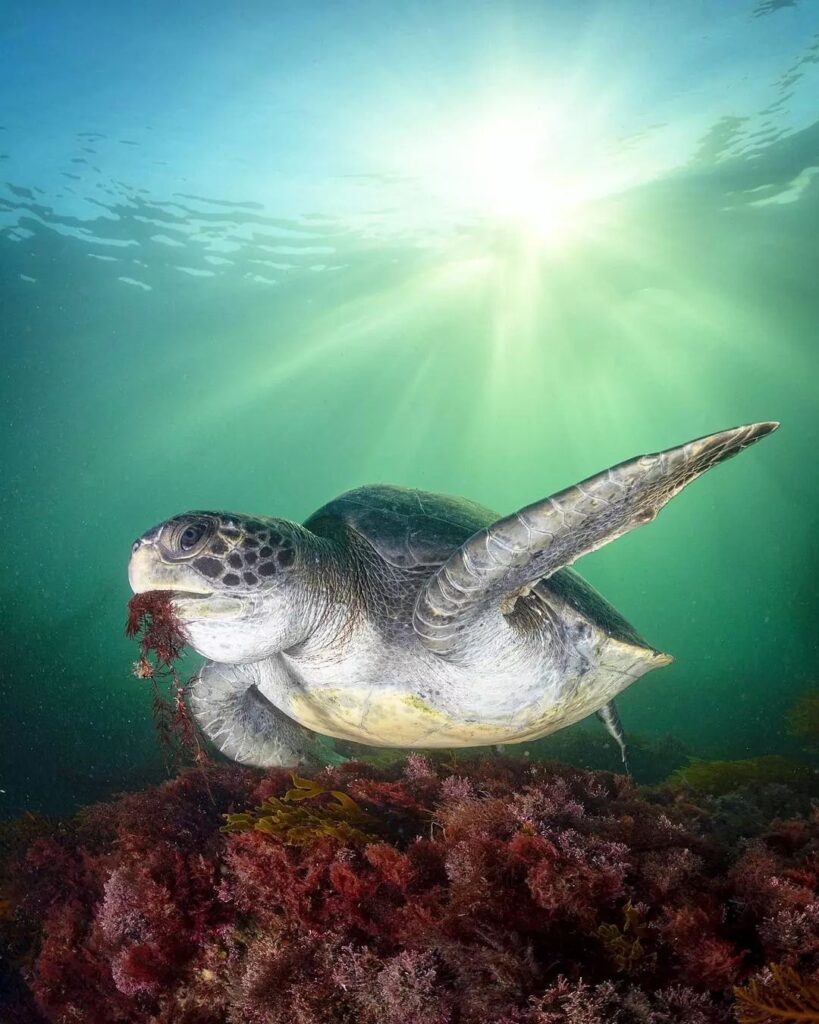
The Chelonian is known as a black turtle because of its typically gloomy coloring. They definitely can be considered the biggest turtle in the world. Due to the species’ emerald subdermal fat, they are referred to as “green turtles.” When the animals are young, they are dark, but as they get older, their coloration lightens. Green turtle shells can grow as long as 47 inches (120 centimeters). They can weigh up to 200 kg (441 pounds).
One of the largest marine turtles with a hard carapace is the green sea turtle. Since they eat mostly seagrass and algae, they are unique among marine turtles in that they are herbivores. Their diet may be to blame for their adipose tissue that appears green.
Oceans around the globe that are warm and subtropical are home to green turtles. These include the Pacific Ocean, the Atlantic Ocean, the Mediterranean Sea, and the northern Indian Ocean. Their typical range of latitude is between 40 degrees south and 40 degrees north.
As a rule, green turtles like to reside near the shore in shallow waters. To procreate, adults typically go back to their birth locations. Between their feeding/foraging areas and their locations for mating, they typically move.
3. Galapagos Tortoise

Another species of the biggest turtle in the world is the Galapagos Tortoise. The Galapagos Archipelago, a collection of islands off the coast of eastern Ecuador and the northwest Pacific Ocean, is home to the unique Galapagos turtle.
The titans of the turtle world are the Galapagos tortoises. Males can carry up to 500 pounds (227 kilograms), while females typically hold around 250 pounds. (113 kilograms).
The large, scaly carapace of those turtles is either gray or brown. The ribs and shell plates combine to create a solid protective framework that is an essential component of the skeleton. Lichens may grow on the shells of these animals at slow-moving rates.
In 1535, the Panamanian bishop Fray Tomás de Berlanga, who is known for discovering the Galapagos Islands, described the Galapagos tortoises as massive creatures capable of carrying a grown man on their backs.
4. Aldabra Giant Tortoise
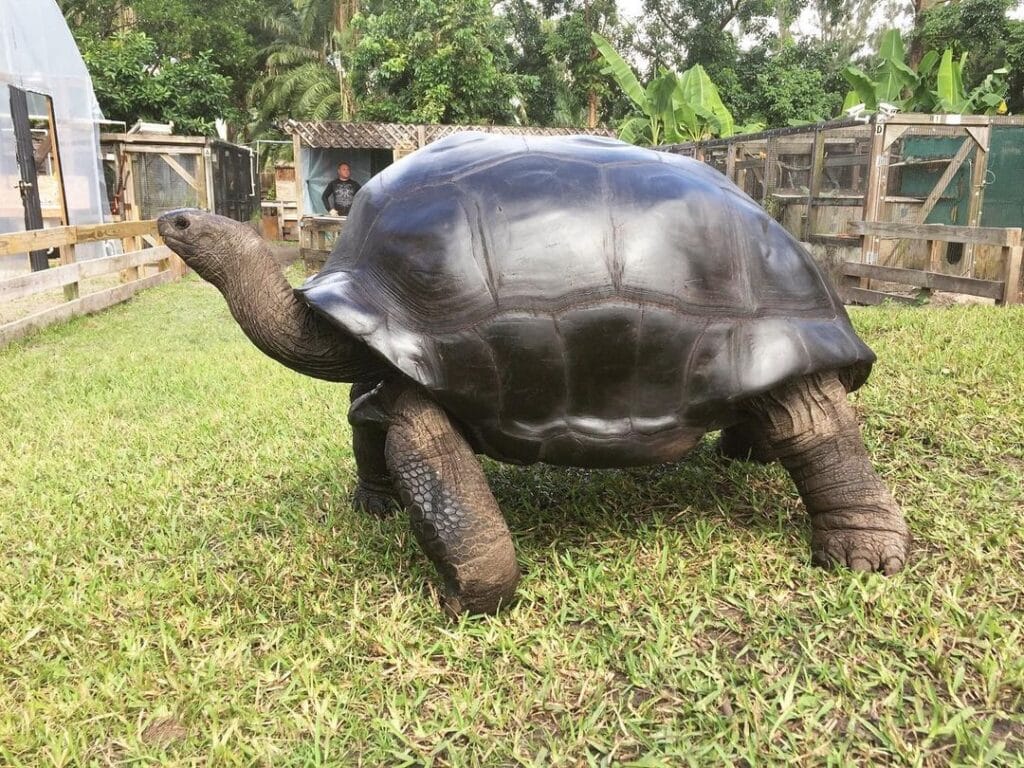
One type of giant turtle, the Aldabra Giant turtle, is unique to the Aldabra Islands in the center of the Indian Ocean. Aldabra deserves the spot on this list as it is one of the biggest turtle in the world.
The main habitats of the Aldabra Giant turtle are the meadows and wetlands of the islands that make up the Aldabra atoll, which is situated in the Seychelles group in the Indian Ocean. Seychelles includes these islands.
They once coexisted on these islands with a variety of enormous turtle species, but human activities during the 1700s and 1800s caused many of these other species to go extinct.
5. Hawksbill Sea Turtle
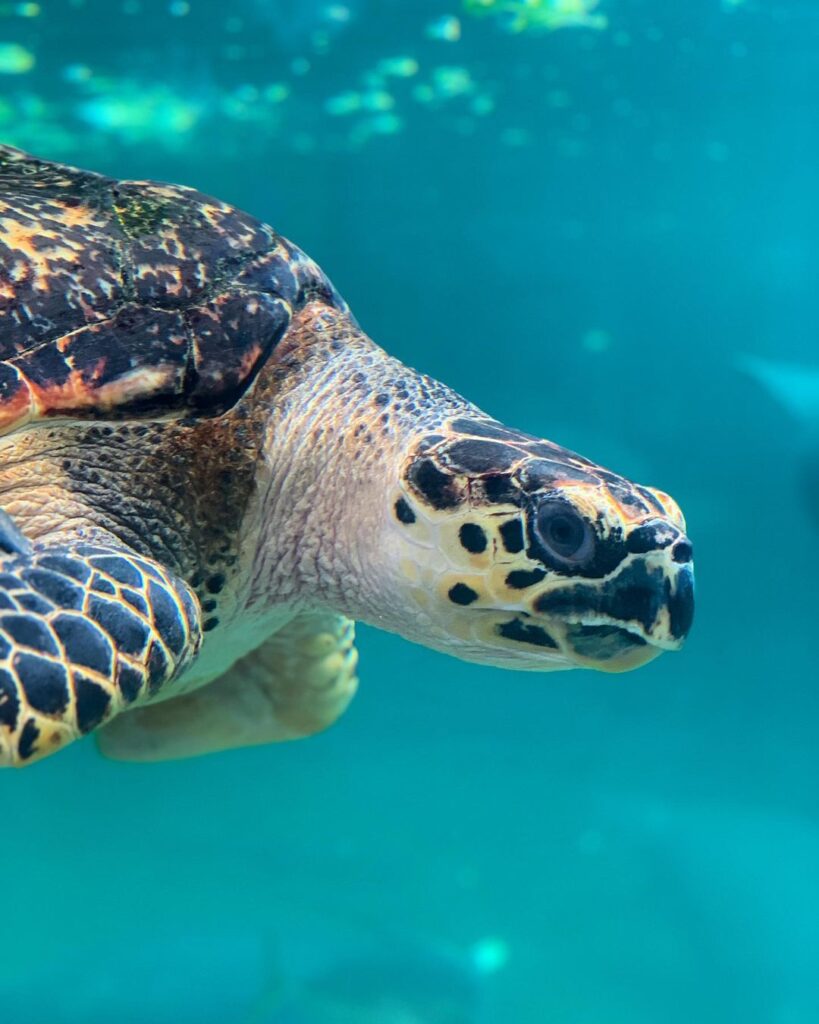
Despite their rarity, Hawksbill sea turtles account for about 50% of the top ten biggest turtle in the world. The hawkbill’s mouth and beak, which mimic a hawk’s beak, earned it the moniker.
This turtle can grow to a maximum weight of 280 pounds and a shell length of 45 inches. Similar to other sea turtles, they have a heart-shaped shell.
They look like they have a hawk’s beak because of the area between their skulls. Despite having a big appearance, they are smaller than the leatherback, loggerhead, and green turtles. Males are more multicolored and have bulkier tails, longer talons, and a more concave plastron than females.
When compared to other marine turtles, the Hawksbill turtle matures sexually much earlier. When they are about 3 years old, they become sexually mature. Although the precise lifespan of these species is unclear, it is thought that they are capable of surviving for 50 years.
Hawksbill is known to travel great distances from their feeding/foraging locations to their mating and nesting sites, just like the majority of other sea turtles do.
Bottom Line – Biggest Turtle In The World
After discussing the biggest turtle in the world, it is crucial to emphasize that protecting turtles is more important today than ever. Unfortunately, the population of the largest turtles listed above is quickly decreasing over time due to factors such as bycatch in fisheries, coastal development, and marine pollution, as well as a lack of knowledge and actions taken to protect their habitat and livelihoods. Without immediate protection action, it might not be long before we lose some of these magnificent animal species.

Nato is a content writer and researcher with a background in psychology who’s eager to explore the wonders of nature. As a travel enthusiast and animal lover, she hopes to inspire others to discover and cherish the beauty and importance of the natural world.

